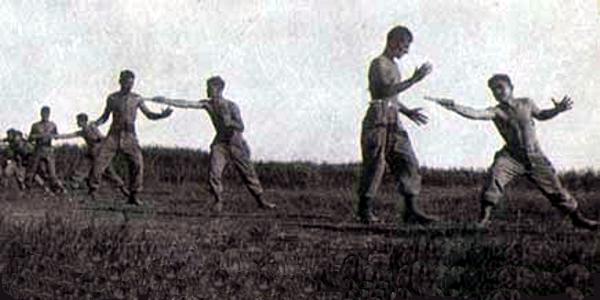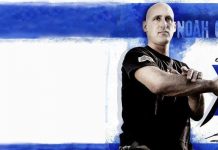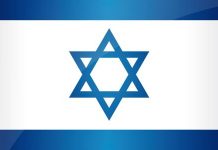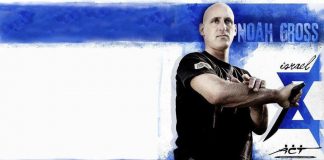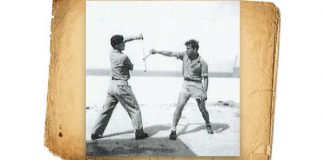By Chaim Peer, Moni Aizik, Avi Nardia, Johan Castillo
Krav Maga is a beautiful martial art, created by one of the most influential and leading instructors in Israel’s history. However Krav Maga is a generalized term, and when you look it up in the dictionary in Israel, it will say that Krav Maga is a hand-to-hand fighting system based on close quarters combat. Maga meaning close, and Krav meaning battle.
Around the 70’s and 80’s, Krav Maga was introduced to the civilian sector by one of the most respected Israeli instructors of Israeli CQB, Imi Lichtenfield, or as others know him, Imi Or-Sadeh. And most of his knowledge was based upon experience.
Because Army and Law Enforcement agencies around the world have a limited amount of time in which to teach the participants the program, many of the CQB systems will be based on simplicity and the techniques will be basic, thus allowing the participant to learn and perform the techniques in a quick and timely manner.
Another factor that comes into play is liability. What is taught to the military sector is definitely not taught to the law enforcement sector, and what is taught to that sector is not taught to the civilian sector. The threat levels are simply not the same, so the techniques must vary.
The majority of Israeli CQB instructors in the civilian sector are not all necessarily the same CQB instructors at the Israeli Military, Law Enforcement and Secret Service Academies in Israel. The only common denominator is that they use the generalized term, “Krav Maga.”
Ran Cohen, a former Israeli Secret Service instructor, and also close friend of mine, uses the term Operational Krav Maga. Another former instructor after Imi Lichtenfield, Eli Avikazar, switched the name to Krav Magen, while others simply use the term Krav Maga. Lt. Colonel Chaim Peer uses Kapap / Lotar, Major Moni Aizik uses Edge Combat, while Miki Erez, Niel Farber and Moti Horenstein use Kavana and Hisardut Survival.
I was blessed with the opportunity be a Krav Maga instructor for the Israeli defense force (IDF ) and Hagana Hatzmit instructor for Law Enforcement at the Operational Police Academy in Israel, and also a Lotar instructor for Israel’s top Counter-terrorism Unit Yamam. In doing so, I was exposed to all the different concepts and levels of what everyone is calling “Krav Maga.”
While the Army uses the term Krav Maga, the Police Academy uses the term Hagana Atsmit, which really means self-defense. The police want to convey an image of self-defense for arrest and control, a less lethal approach than that of the military. At the same time, the counter-terrorism unit, which at one time used the term “LochamaZeira”, meaning micro combat, now use the term Lotar, which is counter-terrorism.
Here we have the same situation as mentioned above about the different sectors. A military unit that is only doing intelligence gathering does not need the same type of CQB training as a unit that performs high-risk procedures.
The term encompasses Israeli Filipino Knife Fighting, Israeli Judo, Israeli Jiu-jitsu (Hisardut) and more.
My medical insurance in Israel says that I cannot do skydiving, skiing or Krav Maga. That does not mean Krav Maga, it means any martial arts at all.
So now a group has left the military and started teaching to the civilian sector, and they call their martial art Krav Maga. And for that reason Krav Maga is now being known as a style.
The term Krav Maga to Israel is like the term Karate is to Japan. To be more specific, if you are training in Japanese Karate, do you know Shotokan, Kyokoshin Kai, Wado Ryu? These styles all have different founders and are different organizations, but they are all Karate.
Anyone who says that they teach Krav Maga is not being specific, unlike Eli Avikazar’s Krav Magen. For this reason when I came out for civilians I decided to be more specific as to what style I do.
I have worked with other former Special Forces instructors like Major Moni Isaac and Lt.Colonel Chaim Pe’er, and the experience that each of us brings to the table is different than that of the other. For that reason we know we must be more specific. We are very different than Krav Maga.
My father started training years ago when Israel was created as Kapap, and it is from this that my style comes from, even if today some people call the style Lotar.
My conclusion is that there is no way anyone can own or copyright the name Krav Maga, it is simply too general. There has already been a case involved with the copyrighting of the term “Brazilian Jiu-jitsu” and the person suing lost, the term was too general.
About the Authors
Chaim Peer the president of Kapap – Lotar student of Imi Lichtenfeld and from the first Krav Maga instructors in Israel and one of top Lotar instructors for the IDF , served in Israeli special forces and run Tel Aviv university combat club, in between his students the top secret service instructors, Yamam unit instructors and troops as civilians
Moni Aizik served in the Israeli Special forces and from the creators of Krav Maga and the Israeli Martial arts and Hand to Hand Moni Aizik was teaching Krav Maga (his way of Krav Maga – Edge combat) also at his Maccabi Tel Aviv school from 1970 to 1985 ! in between his student Yael Arad –Israel Judo champion and Olympic games Silver medal, Carlos Newton Pride and UFC and Vale Tudo Champion, Avi Nardia from the leading Israeli hand to hand.
Avi Nardia is one of Israel’s top Hand-to-Hand instructors in the arts of Kapap, Lotar, Hagana Hatzmit and Krav Maga. He served as an instructor in Israel for 24 years, training military, law Enforcement and Special Forces units in Israel and all over the world.
Johan Castillo
A Brazilian Jiu-jutsu instructor as well as Israeli Krav Maga instructor and Kapap Lotar and Kavana instructor that teach for army troops hand to hand program.

